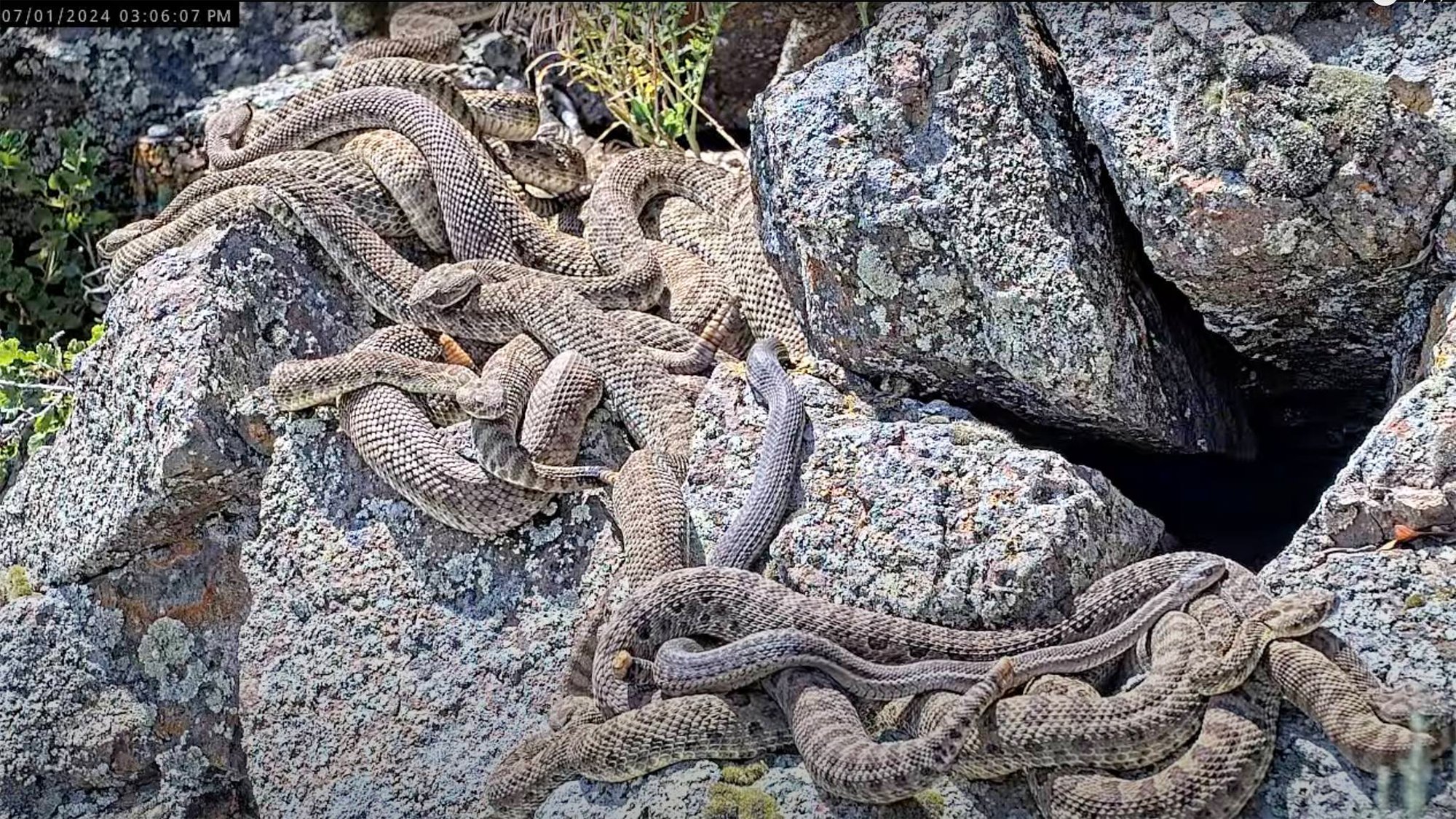

A group of rattlesnake researchers from California Polytechnic State University (Cal Poly) have installed a camera system called the RattleCam at a “mega-den” of rattlesnakes in Colorado. The cameras live stream the footage to YouTube and offer a new look into a very rare habitat. This mega-den attracts hundreds of rattlesnakes due to its geologic features that give snakes a place to hide and shelter.
[Related: Beluga Whale Live Cam brings the ‘canaries of the sea’ to your screen.]
The best times to watch the Rattle Cam are during the morning and early evenings Mountain Time. Viewers can observe pregnant rattlesnakes basking and interacting with each other. Unlike other snakes, rattlesnakes give live birth. They carry their fertilized eggs internally for about three months and this season’s pups should be born sometime in August.

Predators will also likely visit the mega-den to try and attack the rattlesnakes. When the snakes get thirsty, they tend to emerge en masse to drink the raindrops that have been collected on their coiled and scaly bodies.
The live stream is part of a community science initiative called Project RattleCam. The project has deployed a similar camera at a smaller rattlesnake den in California for the past three years.
For the reptile’s protection, the location of the mega-den has not been disclosed, but it is in a remote section of privately owned land in northern Colorado. According to Cal Poly, the solar-powered camera system is largely funded by donations. It was designed and installed by a team from Cal Poly’s Bailey College of Science and Mathematics. Previously, researchers shared some time-lapse images of the den on the Zooniverse citizen science website, but this new camera set-up offers a live video feed.
[Related: Stressed rattlesnakes just need a little help from their friends.]
“This livestream allows us to collect data on wild rattlesnakes without disturbing them, facilitating unbiased scientific discovery,” Emily Taylor, project lead and a Cal Poly biologist, said in a statement. “But even more important is that members of the public can watch wild rattlesnakes behaving as they naturally do, helping to combat the biased imagery we see on television shows of rattling, defensive and stressed snakes interacting with people who are provoking them.”
According to Taylor, citizen scientists have reported novel interactions, including rodents scurrying by the sleeping snakes at night. Viewers reported these observations in the YouTube live chat and submission forms through Project RattleCam. Viewers are also helping scientists by identifying snakes by their scale patterns. Much like human fingerprints, these patterns are unique to individual snakes.

After the pups are born later this summer, they should stay in the den with their mothers until the male snakes return in September from their summer hunting grounds for hibernation. The camera will then be turned off for the winter, and start backup sometime in Spring 2025.
“We hope to eventually install cameras on snake aggregations (group gathering) all over the world to help us better understand the behaviors of these complex, social animals,” Taylor said.
[Related: Snake venom’s deadly secrets decoded with fake blood vessels.]
Cal Poly students are currently using images taken from the live stream overlaid with data collected from a cellular weather station at the Colorado site to see how the snakes conserve water, maintain their body temperature, and even avoid sunburn. Other students training to become teachers have designed a curriculum called “RattlEd” to engage elementary school students using the Project RattleCam.

“Third- through fifth-graders will investigate their own scientific questions while watching the snakes with supplemental art, science, and engineering activities to support their learning,” Owen Bachhuber, a Cal Poly biological sciences graduate student, said in a statement. “The team will measure how children’s perceptions of snakes change after participating in the RattleCam unit.”
